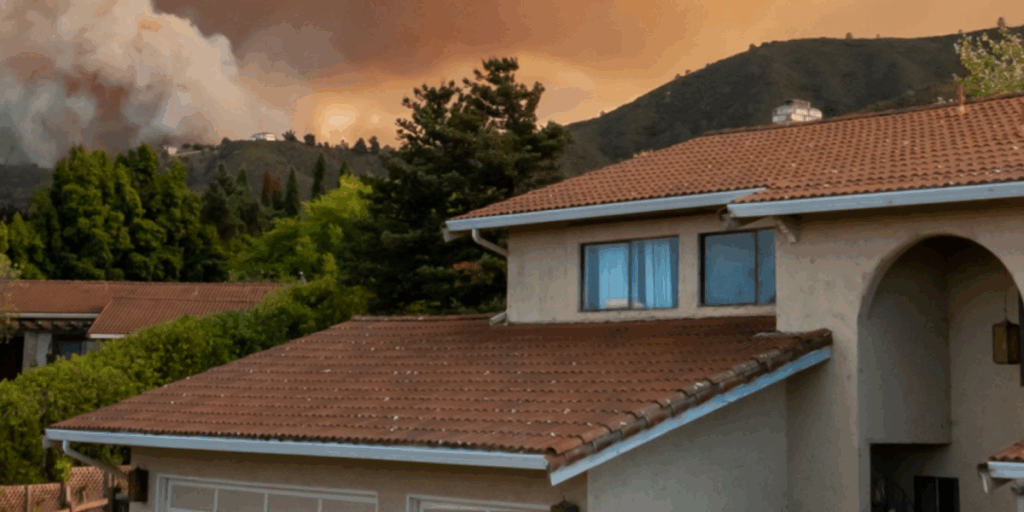From Legislation to Landscape: How Zone 0 Will Shape Wildfire Resilience
At WRA, we believe that a community’s ability to prepare for, adapt to, and recover quickly from wildfire requires implementing a comprehensive suite of strategies. This can include land use planning, community engagement, and designing and constructing fire-resistant infrastructure. But this is all predicated on the need to adopt innovative legislation. In 2020, California’s state legislature passed a law requiring homeowners in State Responsibility Areas (SRA) and very high fire-hazard zones to create a defensible space buffer around the first five feet of homes and structures, referred to as Zone 0 (maintaining defensible space within Zone 1 and Zone 2 is already required by law in the Wildland Urban Interface).
What is Zone 0?
Adequate defensible space, Zone 0 included, acts as a barrier to slow or halt the progression of fire that would otherwise engulf a property. The majority of homes lost to wildfire are ignited by flying embers. Embers can travel miles ahead of the active wildfires and ignite via combustible vegetation on or near a structure like tree branches, bamboo adjacent to outside walls, or climbing vines. Removing these combustible materials mitigates wildfire risk.
This is not to be confused with home hardening, the process of upgrading or retrofitting components of homes (like vents or roofs) and their immediate hard material surroundings (like a fence) so they are resistant to ignition from ember storms, radiant heat, and direct flame.
Why is this important?
California’s wildfires are increasing in size, severity, intensity, and complexity. Over the last 10 years in California, one in every seven acres has burned, 188 people have lost their lives, and over 57,500 structures have been destroyed. Furthermore, the monetary loss derived from these wildfires amounted to over $117B from 2017 to 2021. January 2025’s devastating wildfires in Los Angeles, the Palisades and Eaton fires, saw a loss of upwards of $131B alone. And with the U.S. Chamber of Commerce stating that $1 of resilience investment reduces the disaster recovery costs by $6, then California’s effort to implement innovative legislation to mitigate wildfire risk mitigates economic devastation, while also protecting homes and the surrounding environment.
Why is WRA paying attention?
WRA’s Vision is to help make a positive impact on the natural environment and local communities. This includes California’s native plants and vegetation resources, its diverse fish and wildlife populations, and the state’s diverse landscapes beloved by residents and visitors alike. “Good fire”- such as broadcast burns, prescribed burns and cultural burns – has maintained biodiversity and ecosystem health over time immemorial. In contrast, high-severity wildfires disrupt these systems by destroying native vegetation, promoting invasive species, and causing widespread ecological degradation. Wildfire is a climate hazard that transcends the natural environment and built environment. As both professionals and community members, understanding how policies can better mitigate negative impacts on both is something we are committed to.
What’s Next for Zone 0?
While the Zone 0 policy was supposed to take effect in 2023, the rollout has been significantly delayed and the specific requirements are still being reviewed. The California Board of Forestry, in partnership with the State Fire Marshal, will finish drafting and adopting Zone 0 regulations by the end of 2025 (although we applaud our clients who are already moving forward with local policies to start implementing Zone 0 regulations in select very high fire severity zones).

Senior Community Resilience Planner
E: molly.curleyobrien@wra-ca.com
WRA is Here to Help!
From writing a grant application to supporting Zone 0 implementation (think cash incentive programs) to fuel reduction planning, to wildfire resilient data, WRA’s multidisciplinary team looks forward to rolling up our sleeves and working on ways to promote wildfire resilience in communities and environments across California. Please reach out to learn more about how we can work together.




